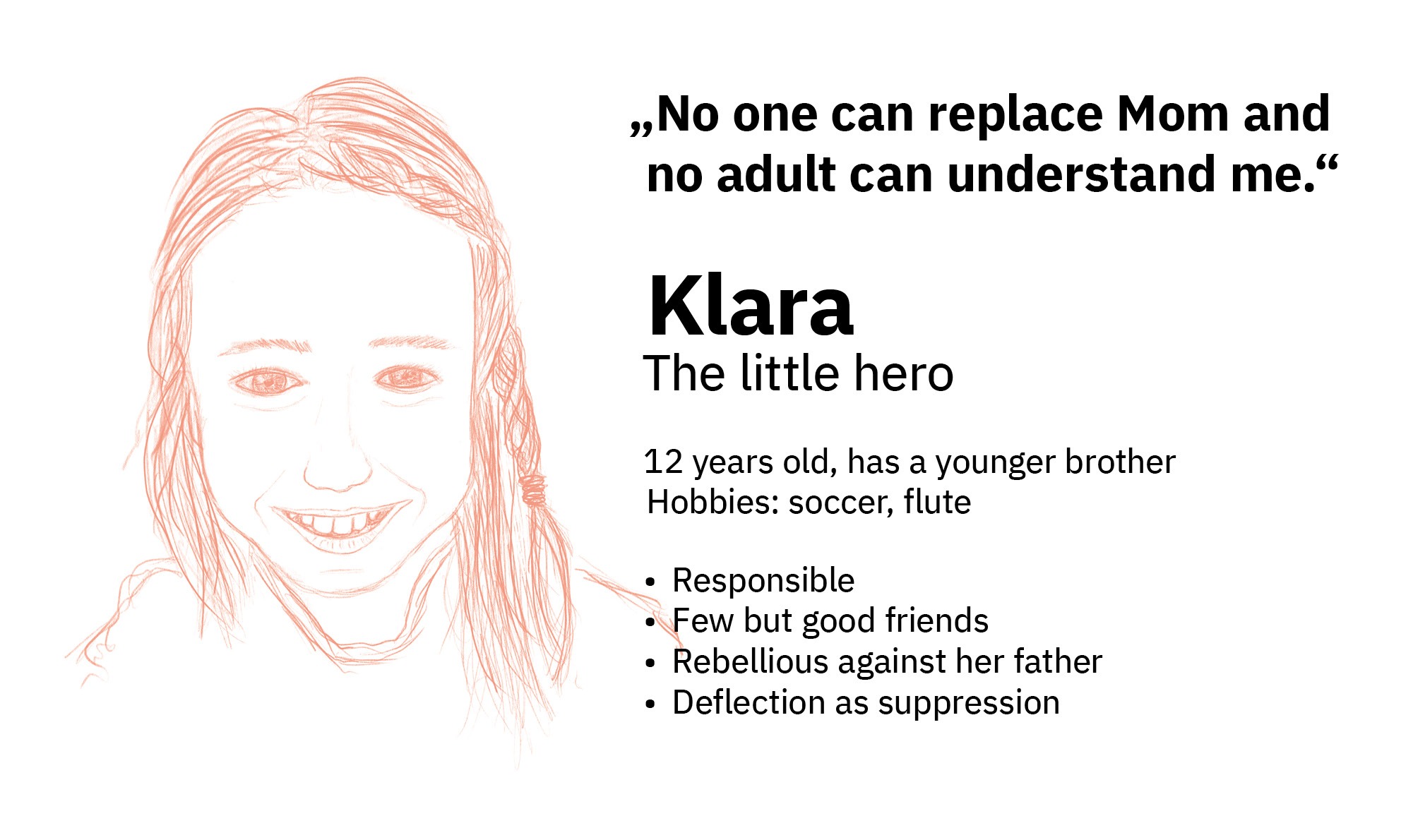Task
Create a project on the topic of mobility.
Study project, 4th semester
When a reference person is lost the accustomed inner and outer world of young people is thrown into confusion. They not only have to deal with new, unknown everyday situations, but also give the deceased a new place in their lives. The development of the role of the deceased in the head of the bereaved is an essential aspect of coping with mourning. This is where KAHU comes in: It helps to establish the deceased as an inner companion.
KAHU is the system for conscious remembrance for grieving young people who have lost an important caregiver. A modern shrine, which contains important memorabilia, and a bracelet, which represents the presence of the deceased in everyday life, to facilitate the journey of the grieving young person.
The shrine
The user activates the shrine with the help of the bracelet. This creates an association between the two objects and the conscious remembrance of the deceased, and the contents of the shrine are safely stored. The active engagement with the new life situation and the awareness of death helps in the mourning process.
The bracelet
In everyday life, the bracelet offers an anchor that reassures the user when feelings or flashbacks are overwhelmed. As the user remembers, it is left to him – the individual nature of mourning does not allow him to develop a uniform system for it. KAHU offers only the support and the incentive to deal with the death of the caregiver as a young survivor.
Insights
The research
In the case of the loss of a close person, the entire accustomed internal and outside world of a teenager gets disturbed. They must not only deal with new and unknown everyday situations, but give the deceased a new place in his life. Developing and accepting the new role of the deceased is an essential aspect of coping with grief.
Death and grieving, especially at a young age, is a difficult and very emotional topic. To see the full picture and to take a look at the nuances of grief, we got in contact with professional mourning experts and consultants as well as potential users themselves. After interviewing and spending time with grieving teens, we created personas, user journeys and empathy maps to keep the project human-centered.
After our research, we defined five key aspects that our devices have to solve:
- Giving the user control over the intensity and timing of remembering.
- Ease the way back into everyday life.
- Create a familiar physical space for the deceased.
- Promote identification with the deceased.
- Letting the user feel close to the deceased.
Persona

Customer Journey

As the user remembers, it is up to him – the individual nature of grief does not allow him to develop a uniform system. KAHU offers only the support and the incentive to deal with the death of a loved one as a young bereaved.
Insights
Creating an IoT product
The chest
So solve these problems, KAHU provides an interactive remembering system. It consists of a chest, where the user can place his own memorabilia. Becoming a part of the teenagers room, the user can use it as their own personal shrine. It focuses on the positive memories, on the life of the deceased – not the death and every hurting memory that comes with it.
The bracelet
The other part of the system is a bracelet, that can be worn by the user every day. When they get overwhelmed by grief and can‘t control their thoughts, they can rely on it to calm down. When putting a hand on the wearable, it slowly pulses und lights up in a relaxing motion.
The combination
The true value of these devices becomes evident in their combination. By linking these two objects a system is created which makes it possible to connect the wearable permanently to the deceased, even though the wearable itself evokes no memories. When the bracelet is used in everyday life, a new connection to the deceased is established. The deceased is becoming a companion in the users life.
Once this connection is subconsciously established, the bracelet fulfils its role as a permanent companion, the shrine its role as a connecting piece beyond death. But KAHU comes with another function in addition to those illustrated above: Death does not simply disappear or gets pushed back from life, it actively moves into the foreground. Wearing the bracelet opens the way to a more mindful approach to loss.

Still curious?
And you want to know more insights and background informations?
Just write me an email and I can show you our whole documentation.

